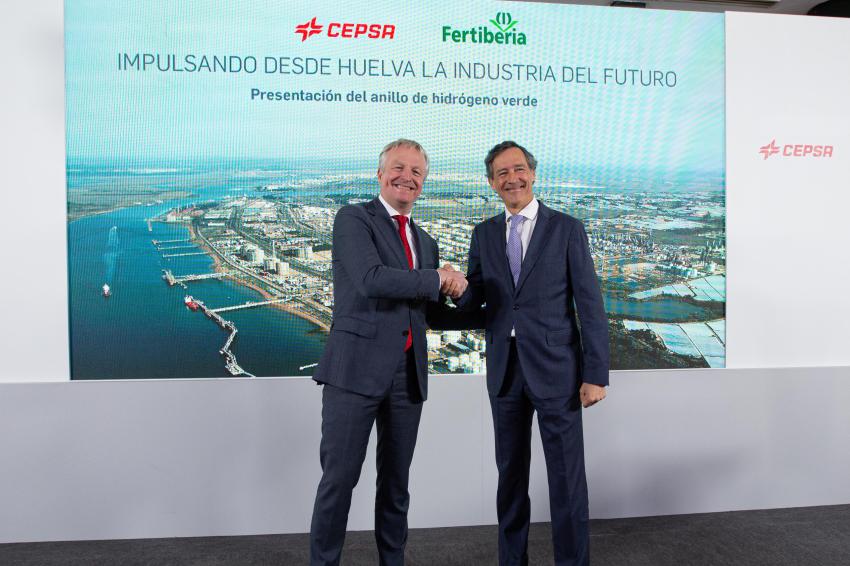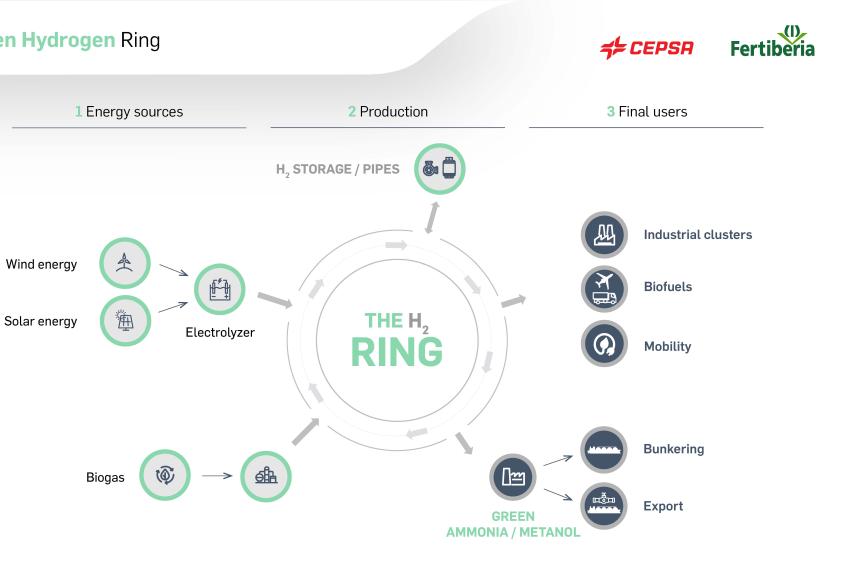CEPSA and Fertiberia Partner on Hydrogen in Huelva
The move is part of CEPSA’s proposal announced last December to invest more than €3 billion to create the Andalusian Green Hydrogen Valley, which it said will be Europe’s largest green hydrogen hub.
Under the agreement, the companies will partner in establishing a 1-gigawatt (GW) electrolysis facility at Fertiberia’s Palos de la Frontera site, which is adjacent to Cepsa’s La Rabida Energy Park. The plant will start operation in 2026 and reach full capacity in 2028.
CEPSA and Fertiberia will use the green hydrogen for their own energy consumption, as well as for the manufacture of advanced biofuels, ammonia, diesel exhaust fluid AdBlue and crop nutrition solutions.
“This alliance will make Huelva's green hydrogen production more competitive, becoming a source of opportunities for multiple companies along the value chain. It will also further the full decarbonization of our assets and our positioning as a leader in green ammonia and sustainable crop nutrition solutions," said Javier Goni, Fertiberia’s CEO.
The firms will also implement other industrial and operational synergies between their Huelva sites, as well as consider the production of green methanol and ammonia, both at Huelva and other provinces in mainland Spain.
As part of the Andalusian Green Energy Park, CEPSA also plans to build a second 1 GW facility at its San Roque Energy Park in Cadiz, with start-up due in 2027. Fertiberia is not part of this project.
In October 2020, the Spanish government established a Hydrogen Roadmap, which has a target for 25% of industrial hydrogen consumption to be renewable by 2030, both as an energy source and as a raw material.
Cepsa agrees ammonia supply to Rotterdam
Separately, Cepsa has signed a Memorandum of Understanding (MoU) with ACE Terminal under which the Spanish energy and chemicals group will supply green ammonia for conversion into hydrogen to a new import terminal at the Port of Rotterdam.
ACE Terminal, located at Maasvlakte, is being developed by a venture that comprises Gasunie, HES International and Vopak. The venture is developing the terminal as an entry point to the Netherlands for ammonia as a carrier for green hydrogen, as well as a sustainable feedstock.
The MoU with Cepsa is envisaged to lead to a binding commercial agreement to facilitate the overseas transport of green ammonia, redistribute it to end markets in the hinterland and process it into green hydrogen ready for use by customers in northwest Europe. Cepsa anticipates starting to export green hydrogen in 2027.
Author: Elaine Burridge, Freelance Journalist






